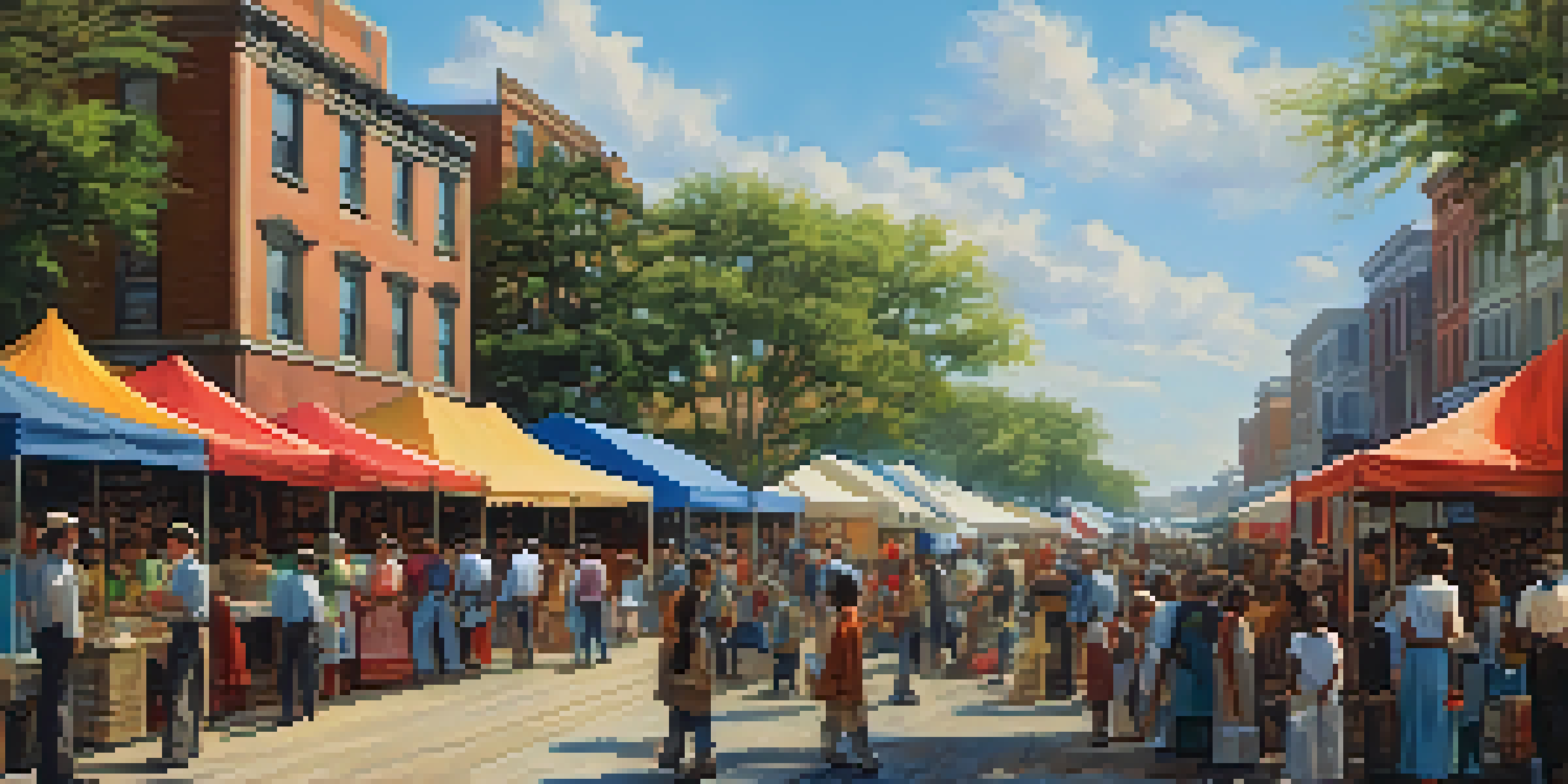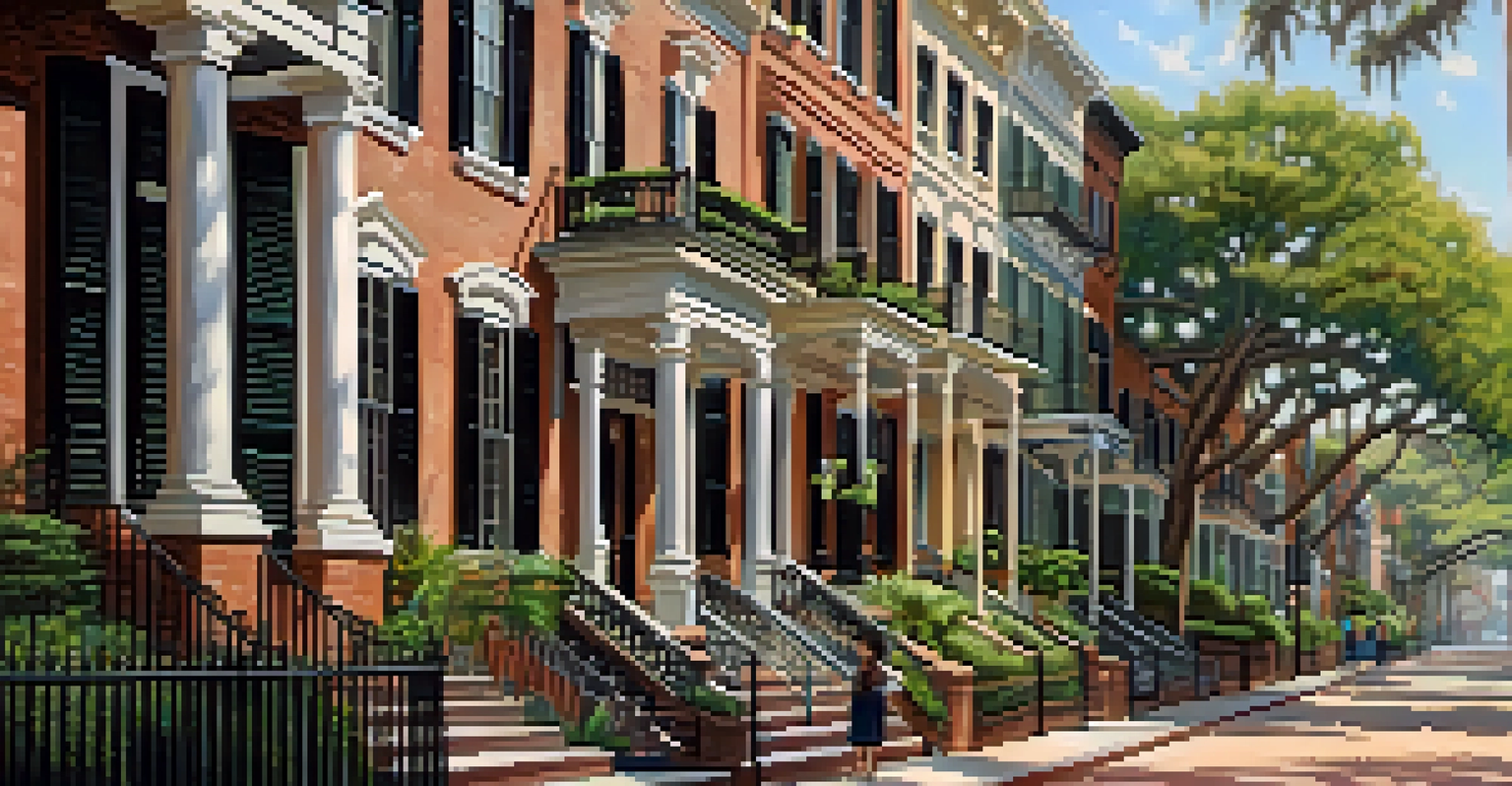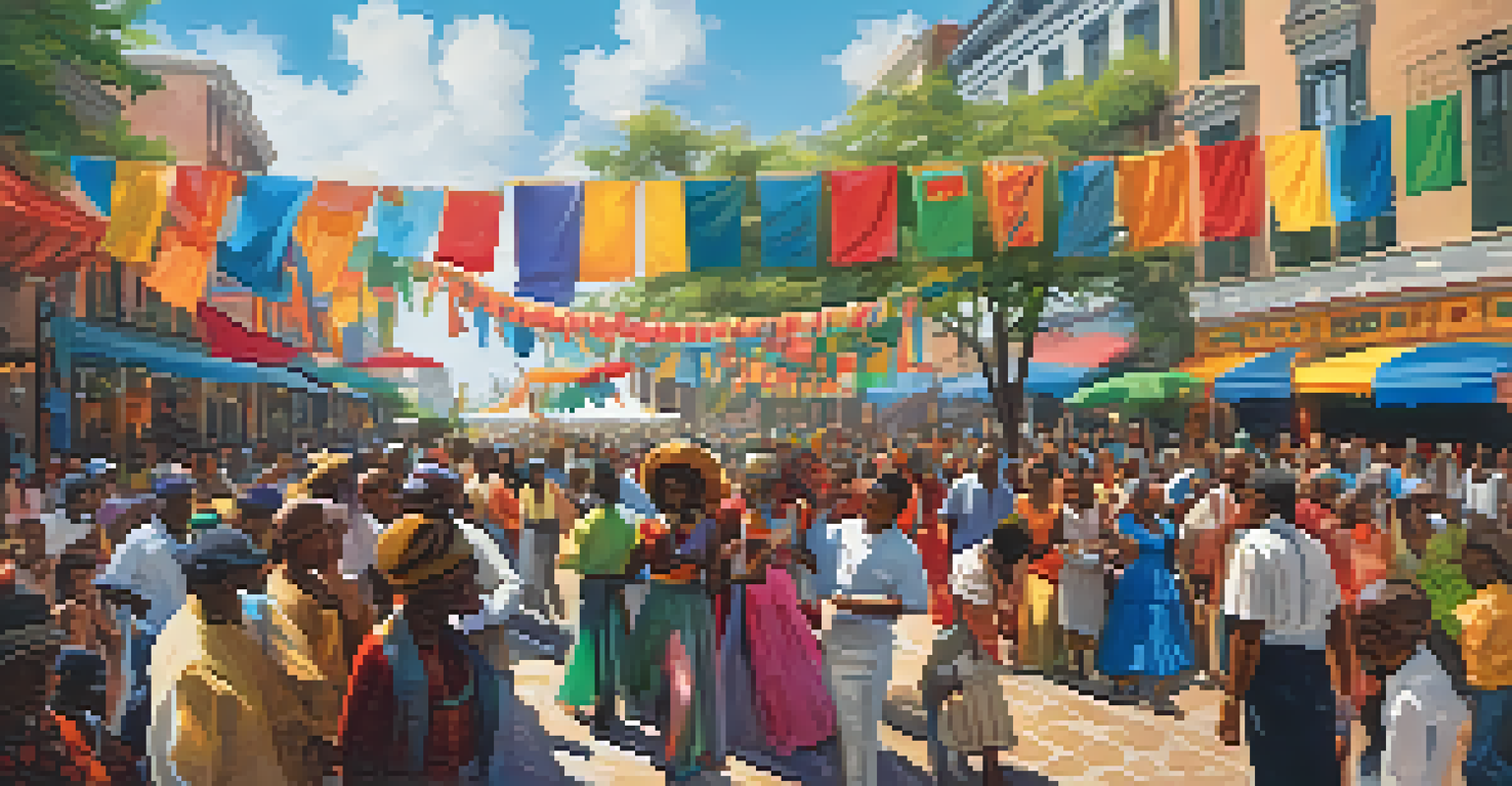Post-Civil War Savannah: Rebuilding and Resilience

The Impact of the Civil War on Savannah's Landscape
The Civil War left an indelible mark on Savannah, transforming its once-thriving economy and altering its landscape. Buildings that had stood for generations were reduced to rubble, and businesses shuttered as the city faced the harsh realities of war's devastation. The aftermath created a palpable sense of loss, but it also sparked a desire for renewal among the residents.
Success is not final, failure is not fatal: It is the courage to continue that counts.
As Savannah emerged from the ashes, the scars of war were evident, yet the spirit of its people remained unbroken. Citizens began to gather to discuss what could be done to restore their beloved city. This community-driven approach laid the groundwork for a collective effort toward rebuilding that would characterize Savannah's post-war era.
In many ways, the landscape of post-Civil War Savannah mirrored the resilience of its inhabitants. Where once there were grand structures standing tall, there were now opportunities for new beginnings. The landscape became a canvas for the dreams and ambitions of those who refused to let the past define their future.
Community Efforts: Banding Together for Reconstruction
In the wake of destruction, the people of Savannah showcased remarkable unity and determination. Local leaders and citizens formed committees to address the myriad challenges of rebuilding, from infrastructure to public services. Their combined efforts highlighted the strength of community bonds in the face of adversity.

Fundraising events became a lifeline for the city's recovery, with residents hosting bake sales, fairs, and concerts to raise money for reconstruction projects. These gatherings not only provided financial support but also fostered a sense of hope and camaraderie among the community. It was a time when neighbors helped neighbors, creating a tight-knit network of resilience.
Community Unity Fueled Recovery
The people of Savannah banded together after the Civil War, showcasing remarkable resilience through collective efforts in rebuilding their city.
As a result of these collective efforts, Savannah began to see the fruits of its labor. Streets that had once been filled with debris were cleared and rebuilt, and businesses slowly began to reopen. This grassroots movement of recovery set a precedent for future generations, teaching them that together, they could overcome even the most daunting challenges.
Economic Recovery: Reviving Savannah's Prosperity
The road to economic recovery in post-Civil War Savannah was fraught with challenges, but the community's resilience shone through. The local economy, once heavily reliant on plantations and slavery, needed to adapt to new realities in order to thrive. This shift required creativity and innovation from the city's business leaders and entrepreneurs.
The greatest glory in living lies not in never falling, but in rising every time we fall.
As Savannah began to rebuild, new industries emerged, including manufacturing and tourism, which helped diversify the economy. The port, which had been a vital trade hub, saw renewed activity as businesses resumed operations and new shipping routes were established. This revitalization breathed new life into the city, drawing both investment and visitors eager to see its transformation.
The economic resurgence not only benefited local businesses but also instilled a sense of pride among Savannah's residents. The city's ability to pivot in the face of adversity became a testament to the indomitable spirit of its people. As Savannah flourished, it became a beacon of resilience, demonstrating how communities can adapt and thrive after significant upheaval.
Cultural Renaissance: The Arts Flourish Post-War
Amidst the rebuilding efforts, Savannah experienced a remarkable cultural renaissance that celebrated creativity and the arts. Artists, writers, and musicians flocked to the city, inspired by the changing landscape and the stories of resilience surrounding them. This influx of talent transformed Savannah into a vibrant hub for artistic expression.
Cultural events began to emerge, from art exhibitions to music festivals, drawing both locals and visitors alike. These gatherings not only showcased the talents of Savannah's artists but also served as a reminder of the community's strength and unity. They became an essential part of the city's identity, illustrating how art can heal and inspire.
Economic Transformation and Growth
Post-war Savannah adapted its economy by diversifying industries and revitalizing its port, which fostered a renewed sense of prosperity.
The flourishing arts scene also played a role in attracting tourism, further boosting the local economy. As Savannah became known for its cultural richness, it drew people from all walks of life, eager to experience the city's unique blend of history and creativity. This cultural transformation helped solidify Savannah's reputation as a resilient city that thrived even in the aftermath of war.
Education and Social Change: A New Era for Savannah
The post-Civil War period marked a significant turning point in education and social change in Savannah. With the abolition of slavery came new opportunities for education, as formerly enslaved individuals sought to learn and improve their circumstances. This shift led to the establishment of schools that aimed to provide education for all.
Community leaders recognized the importance of education in rebuilding society and worked tirelessly to create inclusive learning environments. These efforts laid the foundation for a more educated populace, ready to contribute to the city's growth and development. The focus on education became a vital part of Savannah's recovery, ensuring that future generations would be equipped to face their own challenges.
As the educational landscape evolved, it also coincided with broader social changes, including movements for civil rights and equality. Savannah became a microcosm of the larger societal shifts happening across the nation. Through education and activism, the city began to forge a path toward a more equitable future, showcasing the resilience and determination of its citizens.
Historic Preservation: Honoring the Past While Moving Forward
As Savannah rebuilt, there was a growing awareness of the importance of preserving its rich history. Residents recognized that while it was essential to look toward the future, honoring the past was equally crucial. This led to concerted efforts to preserve historic buildings and landmarks that reflected the city's unique heritage.
The movement for historic preservation not only aimed to protect the architectural beauty of Savannah but also sought to celebrate the stories and memories associated with these places. Community members rallied together to advocate for preservation initiatives, emphasizing the need to maintain the character and charm that defined their city.
Cultural Renaissance Post-War
The aftermath of the Civil War sparked a vibrant arts scene in Savannah, attracting artists and boosting tourism while celebrating the community's resilience.
Today, Savannah is celebrated for its well-preserved historic district, which attracts visitors from around the world. This commitment to honoring the past while embracing progress is a testament to the resilience of Savannah's residents. They have successfully woven the threads of history into the fabric of a thriving modern city, creating a unique blend of tradition and innovation.
Lessons of Resilience: Savannah's Legacy After Reconstruction
The journey of rebuilding Savannah after the Civil War offers invaluable lessons in resilience and community spirit. The collective efforts of its residents not only restored the city but also laid the groundwork for a brighter future. Savannah's story serves as a reminder that even in the face of adversity, people can come together to create meaningful change.
Reflecting on this period, we can see how the challenges of reconstruction fostered a sense of unity and purpose among the citizens. Their determination to revive their city was driven by love for their home and a belief in its potential. This legacy of resilience continues to inspire current and future generations.

Savannah's post-Civil War era is a powerful testament to the strength of community, innovation, and determination. As we celebrate the city's achievements, we honor the lessons learned along the way. In a world that often tests our limits, Savannah's journey reminds us that resilience is not just about survival; it's about thriving against the odds.